

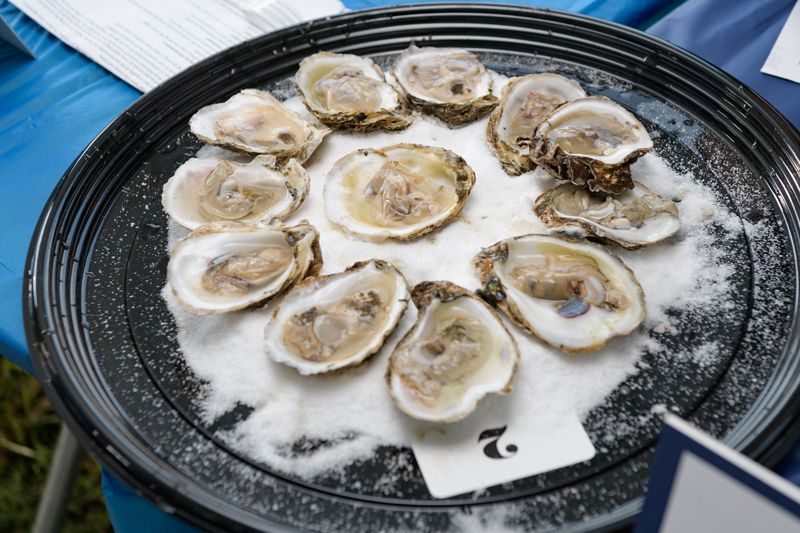
Oyster delivery
Photos by Evan Krape and courtesy of Alyssa Campbell August 22, 2023
Delaware Sea Grant sends first batch of baby oysters to a commercial aquaculture operation in Delaware
When Delaware Sea Grant (DESG) began operating the first oyster hatchery in the state of Delaware aimed at serving research, industry and restoration purposes alike, those involved in the process knew that one day, the hatchery would be able to send baby oysters to commercial fisheries in the state of Delaware. They just didn’t expect it to be so soon.
But that’s exactly what happened when, in early July, DESG’s oyster hatchery sent 200 bags of shell with roughly 105,000 oyster spat—or baby oysters—to a commercial aquaculture operation in the Delaware Bay using larvae that the pilot hatchery produced.
It marked a big day for the hatchery, and a big day for oyster aquaculture in Delaware as a whole.
Ed Hale, who helps oversee the hatchery with DESG’s Alyssa Campbell and Dennis McIntosh, said that while he has been working with Delaware shellfish farmers in the past, helping them to remotely set oysters — attaching spat to old oyster shell — this was the first time that DESG’s hatchery actually supplied a grower with the oyster larvae.
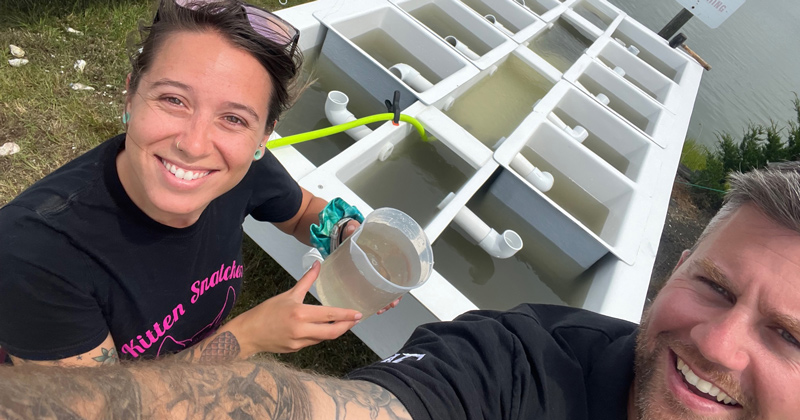
“To go from a first spawn to actually doing a remote set and planning something for industry is really a big step,” said Hale, fisheries and aquaculture extension faculty with DESG and assistant professor in the University of Delaware’s School of Marine Science and Policy. “As far as I know, nobody else has done that in Delaware before.”
For Campbell, coordinator of DESG’s Fisheries and Aquaculture Laboratory, it feels rewarding to already fulfill one of the missions of the hatchery.
“I definitely wasn’t expecting to get our first set, let alone our first two sets, within that first month,” said Campbell. “These were our first two real broods and we got them all the way through to setting. There’s a lot of trial and error throughout the process so the fact that we got them successfully spawned, then retained those larvae for three-weeks and got them to metamorphosis and to setting is exciting. We’re further ahead than we thought.”
Having an in-state option for oyster seed will benefit Delaware growers, as there are regulations in place for importing seed from another state or waterway. For instance, growers have to go through disease testing, which is costly, and a permitting process which can take time. Getting oysters from an in-state oyster hatchery allows them to save on both time and money, especially if they are growing the oysters in the same water body, the Delaware Bay, as the hatchery.
Oyster growing process
Campbell explained that the role of the hatchery is to take parent oysters from specific genetic strains that are selected for a certain disease resistance or to tolerate certain environments, and use those parent oysters to produce oyster larvae. For instance, these oysters in particular were spawned from adult oysters purchased from Rutgers University.
When the oysters are microscopic, the hatchery team rears them through their sensitive larval stage in a controlled, laboratory environment where they can then grow out to the juvenile stage.
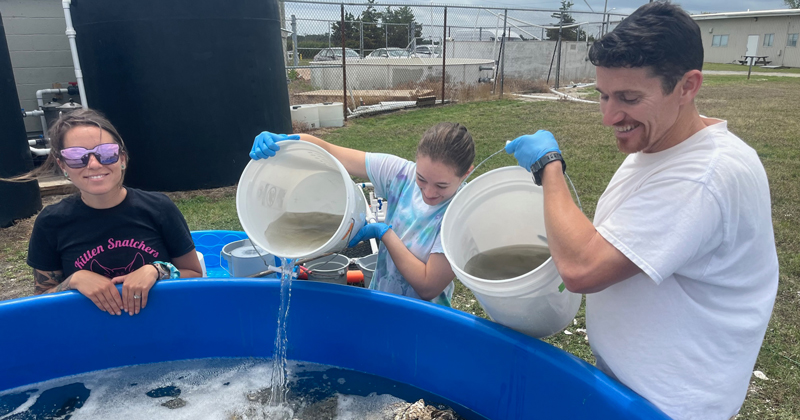
Once this brood reached that stage, they were transferred to Hale’s remote setting tank at which point they transitioned from the hatchery’s purified, filtered water to raw water that has phytoplankton in it—much like they will face once they reach the outside environment.
From the remote set tank, the oysters were taken by Hale and delivered to the local, commercial aquaculture operation where they will grow for approximately two to three years before reaching a mature stage where they can be harvested.
Team effort
To help with this process, two seasonal technicians — Willa Lane and Chris McCarron — were hired using funds from DESG.
Both Campbell and Hale said a big reason for the hatchery’s success is the efforts of Lane and McCarron. In addition, Hale credits Gary Sterling, maintenance supervisor at the Hugh R. Sharp Campus in Lewes, for all of his work with the hatchery.
Lane, a recent UD graduate who was an Honors College student who majored in marine biology with a minor in psychology and was named a 2023 Gates Cambridge Scholar, said that as seasonal technicians, she and McCarron assist with the day-to-day operations at the hatchery. This includes everything from filling and cleaning the tanks to spawning oysters. They also help with any tours that come through the Lewes campus to explain how the hatchery operates for a variety of audiences.
“My hope is that through this outreach and extension work, we help people understand why oysters are important, why oyster aquaculture in the Delaware Bay region is worthwhile, and how this pilot hatchery fills a demand that will ultimately help the industry grow,” said Lane.
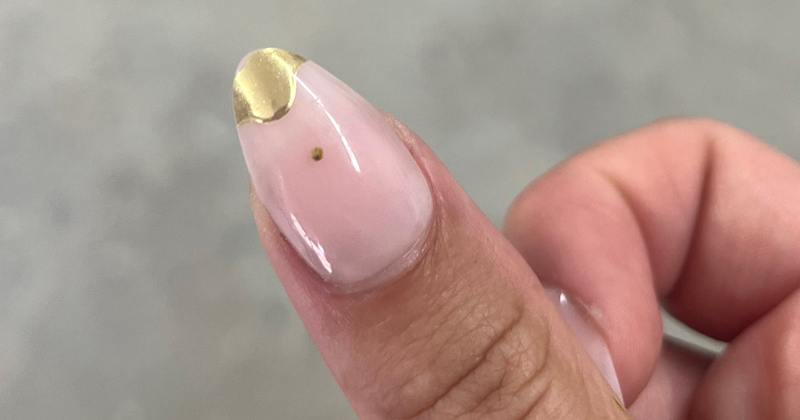
In addition, Lane explained that three times a week, they drain the tanks of whatever brood of larvae they are currently raising, catch the larvae on sieves and clean their tank before replacing their water, which helps keep the larvae happy and healthy.
“We're also responsible for culturing algae to feed everything, which is really cool for me because I took a class on algal ecological physiology this past semester,” said Lane. “It's great to be able to apply things I learned about in a classroom setting to a job.”
McCarron said that their duties also include taking water quality metrics, along with population size, physical size, and tracking developmental characteristics of the oysters.
“We perform these functions to ensure an adequate environment and husbandry are provided for optimal growth and survival,” said McCarron.
Both said it’s an incredible feeling to supply a local aquaculture operation with oysters grown in the hatchery.
“We are fulfilling the mission of the hatchery and a need our growers have sincerely expressed,” said McCarron. “Those oysters can do a host of good in the environment all while growing to be a sustainable delicacy.”
They added that in addition to helping growers and providing jobs, both through farming and restoration practices, oyster farming in Delaware can improve the quality of Delaware’s water, and that it has been a great experience to work on the initial brood that will help with this service.
“Not only are oysters locally grown, they perform a variety of ecosystem services, including by filtering the water as they eat and providing habitat for lots of commercially valuable fish species,” said Lane. “It's a win-win to grow oysters in Delaware, both economically and ecologically, and these larvae are a part of that.”
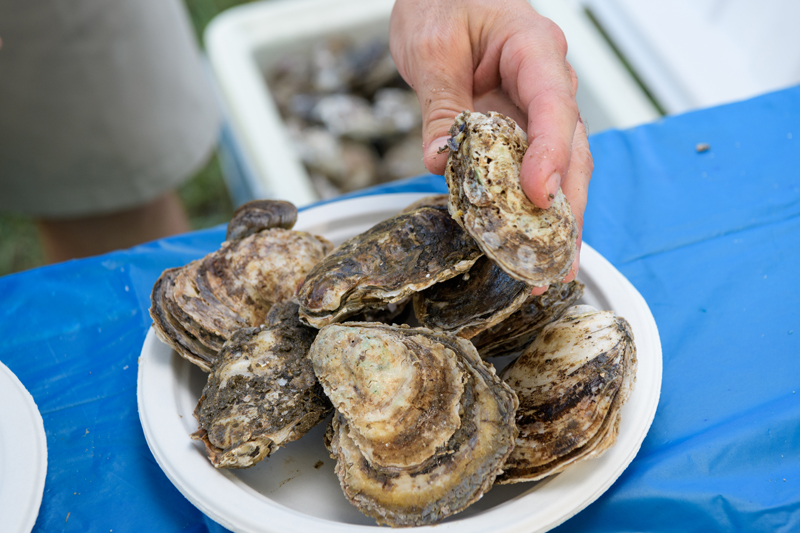
Contact Us
Have a UDaily story idea?
Contact us at ocm@udel.edu
Members of the press
Contact us at 302-831-NEWS or visit the Media Relations website

